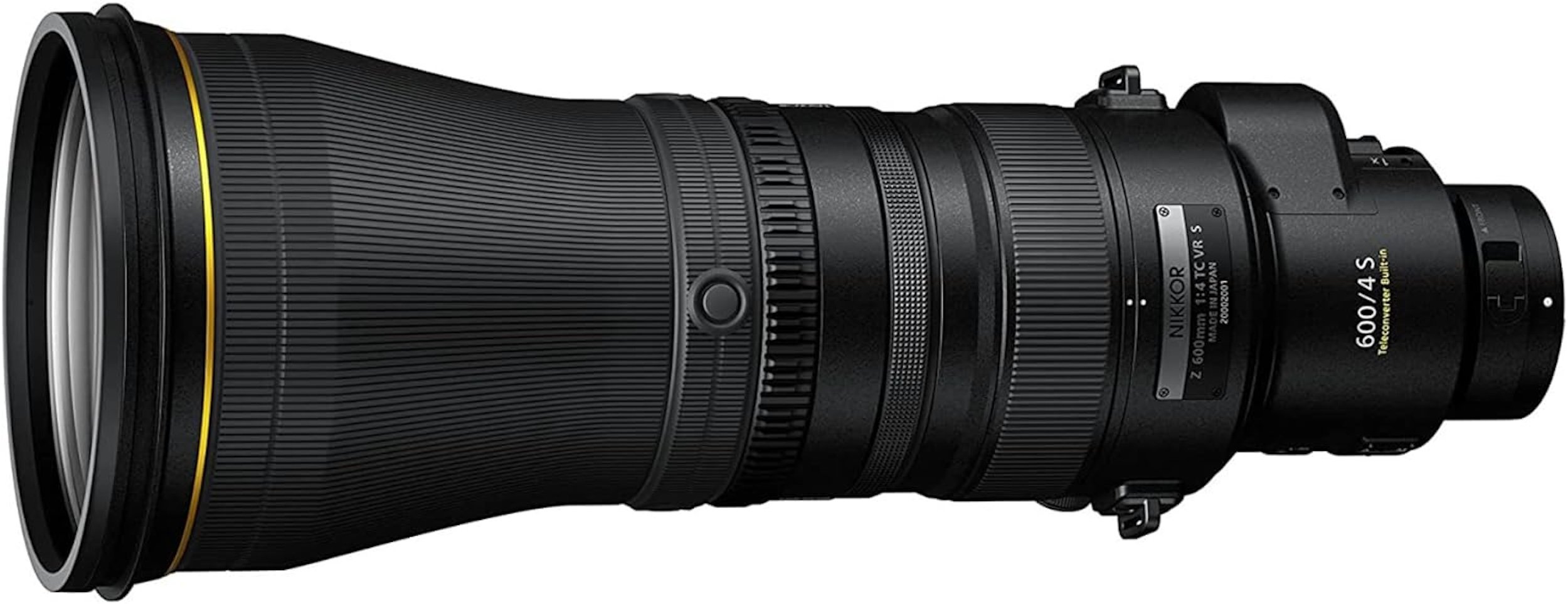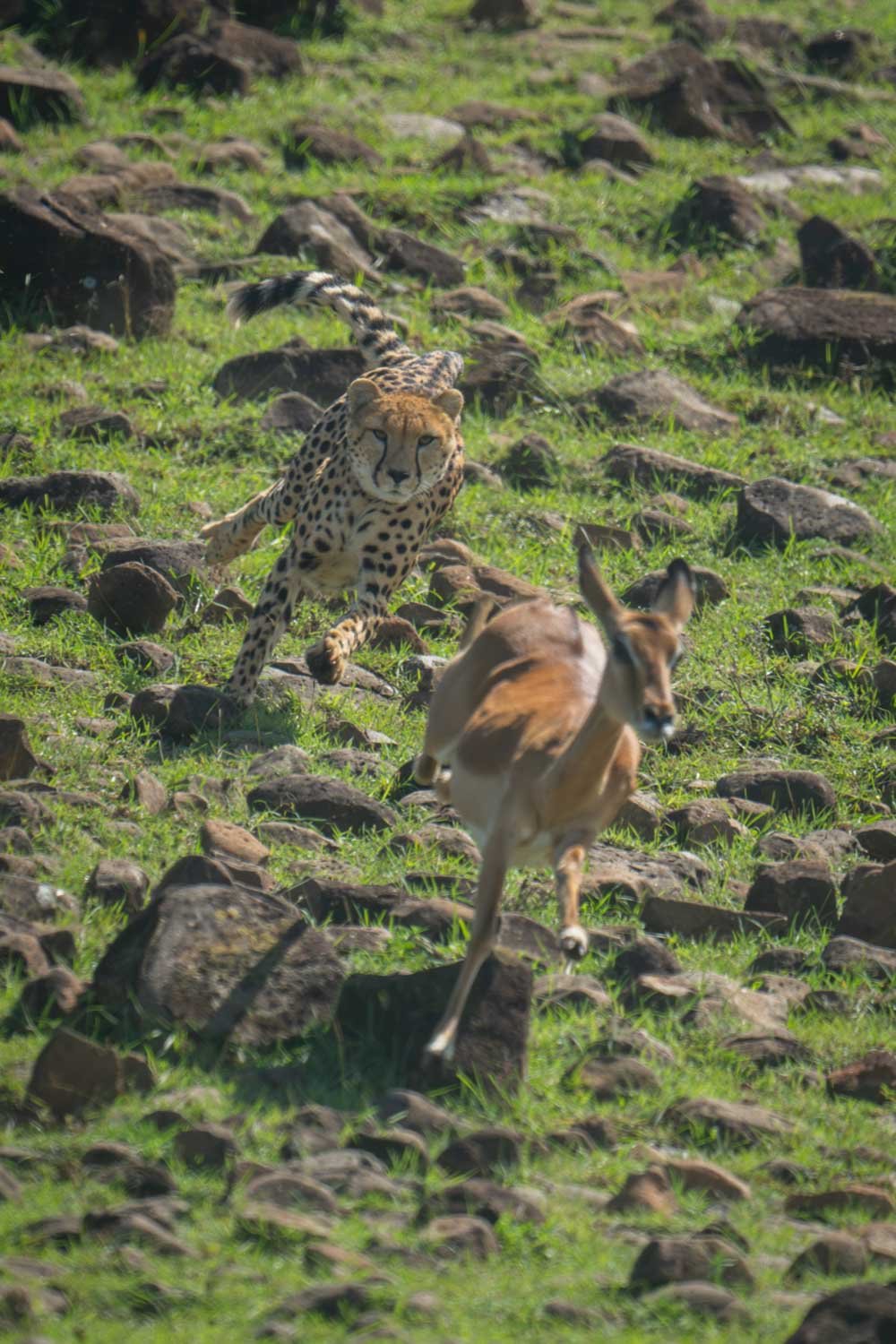Zooms vs Primes for Wildlife Photography
Decisions, decisions…
NIKKOR 600mm prime—my longest lens
Wildlife photography is all about trade-offs, so there are never any easy answers. When it comes to the choice between zoom and prime lenses, my own experience tells me that primes work best at long focal lengths and zooms at wider angles. However, it’s a matter of personal taste, and new features like built-in teleconverters mean the picture is always changing…
Here’s some advice on choosing new lenses for wildlife photography with examples taken from the Sony, Nikon and Canon ranges.
Definitions
Wings of Gold
A zoom is a lens with a variable focal length that you can adjust manually, either using a control on the camera or by turning the zoom ring on the lens itself. The zoom range describes the different magnifications available, from the shortest to the longest focal length. This is either shown in millimetres (eg 24-70mm) or as a multiple (eg a 20x zoom).
A prime is a lens with a fixed focal length (eg 50mm).
Strengths and Weaknesses
Zooms are far more convenient than primes because you can vary the magnification depending on your subject and distance. That ability to zoom in and out makes composition and framing much easier. For larger and/or closer subjects, you can use a wider angle; for smaller and/or more distant subjects, you can use a longer focal length.
Compacts and bridge cameras have a fixed lens, which is obviously a zoom. It would be pretty frustrating to have a fixed focal length as it would give you absolutely no choice about your framing or magnification. It would be like going back to the days of the Kodak Brownie…!
The result of this flexibility is that you don’t need to buy or carry around so many lenses or change them so often. If one general-purpose zoom can cover every focal length from 28-300mm, say, that saves you money and makes packing much easier, as well as saving weight, time and trouble in the field.
So why does anyone buy a prime lens? Well, the problem is that, for all their convenience, zoom lenses are more difficult to manufacture and need more glass elements plus a system of motors to move them around while zooming in and out. That means they typically don’t offer the highest image quality, and they normally have a smaller maximum aperture that may vary with the focal length.
These are all problems for the serious wildlife photographer. The various elements of image quality, such as contrast, noise, chromatic aberration, distortion, sharpness, dynamic range and resolution, are crucial to taking great pictures. If you don’t have the right tools to do the job, you’ll end up with worse results.
If you have the budget and don’t want to compromise on quality, you might want to invest in a few prime lenses. It’ll cost a lot more, and you’ll have to put up with the extra weight and inconvenience, but your images will be sharper with more attractive bokeh.
It didn’t take me any time at all to get used to shooting with a prime lens, and ‘faster’ lenses (with a wider maximum aperture) let you shoot more easily in low light and/or with a shallower depth of field to isolate your subject.
So there you have it. There’s a trade-off between cost and convenience on the one hand and sheer quality and low-light flexibility on the other—but is there another way…?
Built-in Teleconverters
On the Hop (taken with my Sony 400mm prime lens)
If the choice between zooms and primes sounds like the choice between the Devil and the deep blue sea, there is another option. You could buy a lens with a built-in teleconverter (extender).
These are generally telephoto lenses, but they offer better image quality than the combination of a lens and a teleconverter. That’s because the converter is specifically designed for that particular lens and focal length. You have to pay a lot more, but it’s a great way to own two lenses in one!
For example, I currently have a NIKKOR 600mm f/4 lens with a built-in 1.4x teleconverter that turns it into an 840mm lens. I usually want as much reach as possible to enable me to shoot close-ups or distant subjects, but there are times when even 600mm is just too much.
On a recent trip to Africa, for instance, I was trying to capture a lioness jumping on her sister with my old Sony 600mm lens. Everything was fine until the last moment when they both got up on their hind legs—which meant I couldn’t fit everything in the frame!
If I’d had a 400mm lens with a built-in 1.4x teleconverter, I could have photographed the lionesses at 400mm and cropped in later if necessary. It would also have saved me from having to take two long lenses with me—which always means taking an extra bag and worrying about the weight limits on hand luggage!
If Sony had brought out a lens like that, I’d have bitten their hand off! I could’ve bought one lens with a built-in 1.4x teleconverter rather than both the 400mm and 600mm, and it would’ve saved me around £15,000!
Unfortunately, the only way to get what I wanted was to switch to Nikon instead, and that meant buying a Z8 and trading in one of my Sony ⍺1 camera bodies and most of my lenses. I only managed to get about a third of the RRP from Wex Photographic, so I had to take out another loan to finance the deal…
Recommendations
Long Lenses
If you’re a serious Nikon shooter with a mirrorless camera and a decent budget (!), I wouldn’t hesitate to recommend one of the Nikon telephotos with built-in teleconverters:
Nikon NIKKOR Z 400mm f/2.8 TC VR S Super-Telephoto Lens
Nikon NIKKOR Z 600mm f/4 TC VR S Super-Telephoto Lens
Alternatively, the Nikon Z 180-600mm f/5.6-6.3 VR is a cheaper and more flexible alternative if you don’t mind the narrower maximum aperture.
If you have a Canon mirrorless camera, I’d go for the Canon RF 600mm F4L IS USM Lens. There is a 400mm version, but I find I use my 600mm much more than my 400mm due to the extra reach. The L-series is the Canon’s professional range of lenses. They’re more expensive, but you do get what you pay for!
If you have a Sony mirrorless camera, you have a choice. You can either buy the Sony FE 600mm F4 G Master Super Telephoto Lens or go for the extra flexibility and convenience of the Sony FE 200-600mm F5.6-6.3 G OSS Lens. This isn’t as fast as the prime, but it covers pretty much the whole range of focal lengths that work best for a wildlife photographer—and Matt Kloskowski swears by it!
And by the way, if you want to wait for Sony to bring out a telephoto with a built-in teleconverter, you’ll be waiting a long time…!
If you have a DSLR, I wouldn’t recommend spending serious money on a long lens. The three main manufacturers are no longer upgrading DSLRs, let alone releasing new models, so it would be a gigantic waste of money to invest in a new lens before switching to mirrorless.
Mirrorless cameras now have better frame rates and customisation options plus bird and animal eye detection and tracking. That means there’s really no other option…
Teleconverters
Another way to add reach to your lenses without spending a fortune is to buy a teleconverter. The normal choice is between 1.4x and 2.0x. I used to have a bespoke 1.25x teleconverter for my Nikon 800mm, and I now have both Sony models, but I wouldn’t necessarily recommend them.
The main reason I bought them in the first place was to save money when I was just trying out mirrorless equipment, but I’ve had mixed experiences, to say the least. Using any kind of teleconverter reduces image quality, slows down the AF system and increases the minimum aperture (by one stop for a 1.4x or two stops for a 2.0x teleconverter).
I’ve tried using them with both my 400mm and 600mm lenses, but the images just haven’t been sharp enough. There may have been other reasons for that, such as heat haze in India and Africa, but I think I’d rather crop in later instead of trusting a teleconverter—and that’s why I can’t really recommend buying one.
Wide-angle and Medium Zooms
I don’t use my wide-angle lenses as much for wildlife photography, but I’ve recently started to take close-up videos of elephants in the Masai Mara, and I occasionally need to take interior shots for a safari lodge, so there’s always a place for them.
When I first switched from DSLRs to mirrorless cameras a couple of years ago, I didn’t think I could afford to replace all my lenses. However, after seeing how the Sony 400mm performed, I was quick to trade in all my Nikon gear and take out a bank loan to buy just about the whole range of Sony zooms:
Sony FE 70-200 mm f/2.8 G Master OSS II lens
The main reason I bought zooms rather than primes is that it’s easier (and cheaper!) to get wide maximum apertures. As you can see, all these zoom lenses have a constant aperture of f/2.8, and that was good enough for me.
In addition, a wide-angle prime really limits your framing. Twelve millimetres may not sound much, but there’s a big difference between a 12mm and a 24mm lens! The same applies to longer focal lengths. If you’re trying to photograph or video an elephant at close range, you need to be able to switch focal lengths very quickly, depending on how far away the animal is, so the 24-70mm comes in very handy.
If you have a Nikon mirrorless body, here are the best wide-angle and medium zooms available:
NIKKOR Z 14-24mm f/2.8 S lens
NIKKOR Z 24-70mm f/2.8 S lens
NIKKOR Z 70-200mm f/2.8 VR S lens
If you have a Canon mirrorless camera, there isn’t a great choice of L-series RF zooms at the moment, but I’m sure that’ll change in time. These are currently your best bets:
RF 15-35mm F2.8L IS USM lens
RF 24-70mm F2.8L IS USM lens
RF 70-200mm F2.8L IS USM lens
Verdict
Stealth (taken with my Sony 600mm prime lens)
To sum up, choosing between zooms and primes means trading off convenience and flexibility against quality and low-light capability. In addition, there’s the issue of cost. Zoom lenses are cheaper, and one zoom might do the work of two or three primes, saving you a lot of money and weight in the process!
If you’re serious about your photography, you’ll probably want to stick to prime lenses at focal lengths longer than around 200mm, especially if you like shooting wide open and/or in low light, but there’s no hard and fast rule.
Separate teleconverters are only really a way to save money when adding reach, and they don’t do the job well enough to be relied on—whichever brand you choose. However, the dream scenario is to find a telephoto lens with a built-in teleconverter. That’s possible now if you have a Nikon mirrorless camera, but the rest of us will just have to wait and see!
When choosing a wide-angle or medium lens, zooms provide a big benefit in terms of flexible framing that probably outweighs the reduction in image quality for wildlife photography. However, if you shoot a lot with wide-angles, you might prefer a high-quality prime as your go-to lens. It’s up to you…
If you’d like to order a framed print of one of my wildlife photographs, please visit the Prints page.
If you’d like to book a lesson or order an online photography course, please visit my Lessons and Courses pages.





